#big three automakers
Explore tagged Tumblr posts
Text
Actually, the President of the United States is powerful

US Presidents have lots of things they can do beyond signing or vetoing legislation. Their administrative agencies have broad powers that allow them to act without dragging Congress behind them.
For example, Jennifer Abruzzo, the ass-kicking superhero that Biden appointed as National Labor Relations Board General Counsel, has used her powers to establish a rule that companies that break labor law during union drives automatically lose, with the affected union gaining instant recognition.
For a followup, Abruzzo is using a case called Thrive Pet Care to impose a “duty to bargain” on companies. If a company won’t bargain in good faith for a union contract, Abruzzo’s NLRB will simply force them to adhere to the contractual terms established by rival companies that did bargain with their unions, until such time as a contract is signed.
But wait, what about the dastardly Supreme Court? What if those six dotards in robes use their stolen seats on the country’s highest court to block Biden’s administrators?
Well, Biden could do what his predecessors have done. Like Lincoln, Biden could simply ignore the court, embracing popular policies he was elected to enact, revealing the Supremes to be toothless, out-of-touch, undemocratic and illegitimate.
(Andrew Jackson was a monster, but when he ignored his own Supreme Court, he proved that the Supremes’ only leverage came from their legitimacy; recall the (likely apocryphal) quote, “[Chief Justice] John Marshall has made his decision; now let him enforce it!”)
Like FDR, Biden could threaten to pack the court, creating a national debate about the court’s illegitimacy, which would add fuel to the court’s plummeting reputation amidst a string of bribery scandals.
-Joe Biden is headed to a UAW picket-line in Detroit: “I want to do it, now make me do it.”
Image: Fabio Basagni https://commons.wikimedia.org/wiki/:Sahara_desert_sunrise.jpg
CC BY-SA 4.0 https://creativecommons.org/licenses/by-sa/4.0/deed.en
#joe biden#dark brandon#uaw#strikes#fdr#labor#hot labor summer#big three automakers#manchin-synematic universe#unions#i want to do it now make me do it#pack the court#workerism#money talks bullshit walks#jennifer abruzzo#personnel are politics#nlrb#populism#deliverism#doppelganger#republicans hate workers#class war#no war but class war
164 notes
·
View notes
Text
By Stephen Millies
The huge corporation saw how UAW’s successful strikes last year against General Motors, Ford and Stellantis (Chrysler and Jeep) brought the Big Three automakers to their knees. The week before, workers at Volkswagen’s Chattanooga, Tennessee, plant voted three to one to join the UAW.
What made the Daimler and Volkswagen victories all the more important is that they happened in the U.S. South.
#Daimler#Big Three Automakers#strike#unions#UAW#autoworkers#Volkswagon#right to work#class struggle#workers#solidarity#Struggle La Lucha
3 notes
·
View notes
Text
Will the Strike destroy the US Auto Industry?
The UAW strike will not destroy the US auto industry, but it could wreck the historic Big Three automakers. The United Auto Workers (UAW) struck Detroit’s historic Big Three automakers, Stellantis (STLA), Ford (F), and General Motors (GM) on 15 September 2023. This strike will disrupt the auto industry because of the UAW’s demands. For example, the UAW wants to end tiers for workers. Under…

View On WordPress
#Ford (F)#Ford (F) is the Best Value in Electric Vehicle Stocks#Ford Imitates Tesla (TSLA)#Stellantis (STLA)#The Big Three’s Actual Problem#The Tesla (TSLA) Menace#What are the UAW’s demands?#Will the Strike destroy the US Auto Industry?#Will the UAW Bankrupt Automakers?
0 notes
Text
Striking autoworkers tricked the “Big 3” corporations into thinking strike would be taking place at incorrect locations, foiling their anti-strike preparations and inflicting financial damage.
4K notes
·
View notes
Text
For as long as anyone can remember, the Indiana city of Kokomo has been a conservative stronghold. Ronald Reagan crushed Walter Mondale in Kokomo. Bill Clinton lost twice. So did Barack Obama. The current mayor, a Republican, is running unopposed for re-election. It’s a town known for something it would prefer to forget: a Ku Klux Klan rally in 1923 that was the largest ever. Yet somehow Kokomo produced a union leader whose rhetoric is aimed at toppling the conservative and moneyed classes — a rebel who rejects the niceties of an earlier era in favor of a sharp-edged confrontation. “Billionaires in my opinion don’t have a right to exist,” says Shawn Fain, who is leading the United Automobile Workers in a multifront labor battle against the Big Three carmakers that has little precedent and is making a lot of noise. In interviews, in speeches and on social media, Mr. Fain hammers the wealthy again and again, making the cause of the union’s 150,000 autoworkers at General Motors, Ford Motor and Stellantis something much broader. “There’s a billionaire class, and there’s the rest of us,” he said at an impromptu news conference outside a Ford plant in Wayne, Mich. “We’re all expected to sit back and take the scraps and live paycheck to paycheck and scrape to get by. We’re second-class citizens.”
586 notes
·
View notes
Text
President Donald Trump will exempt automakers from his punishing 25-percent tariffs on Canada and Mexico for one month as long as they comply with the terms of an existing free trade agreement, the White House has said. The announcement on Wednesday came after Trump spoke with the chief executive officers of the three big carmakers, Ford, GM and Stellantis.
Continue Reading.
40 notes
·
View notes
Text
Lee Iacocca
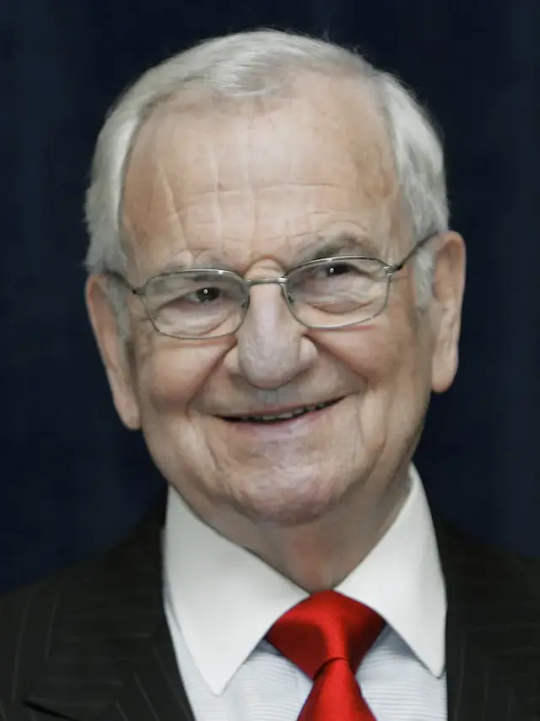
Physique: Average Build Height: 5'8" (1.72 m)
Lido Anthony "Lee" Iacocca (October 15, 1924 – July 2, 2019; aged 94) was an American automobile executive best known for the development of the Ford Mustang, Continental Mark III, and Ford Pinto cars while at the Ford Motor Company in the 1960s, and for reviving the Chrysler Corporation as its CEO during the 1980s. He was president of Chrysler from 1978 to 1991 and chairman and CEO from 1979 until his retirement at the end of 1992. He was one of the few executives to preside over the operations of two of the United States' Big Three automakers.
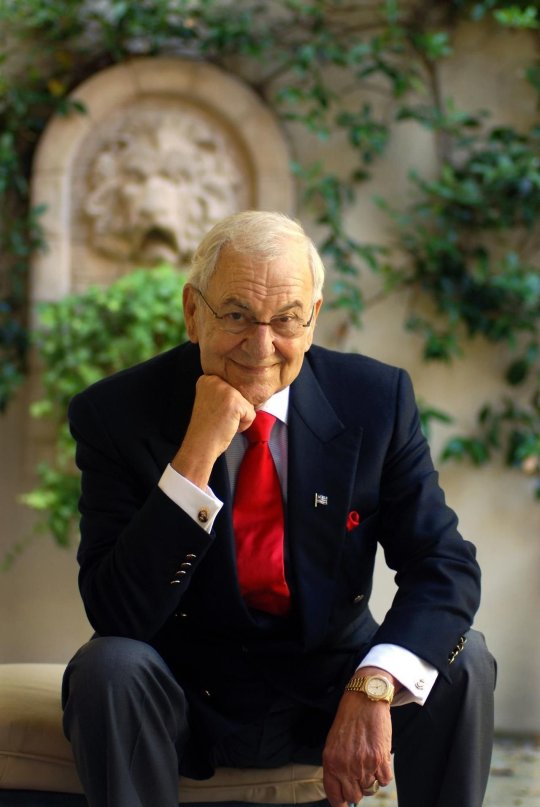
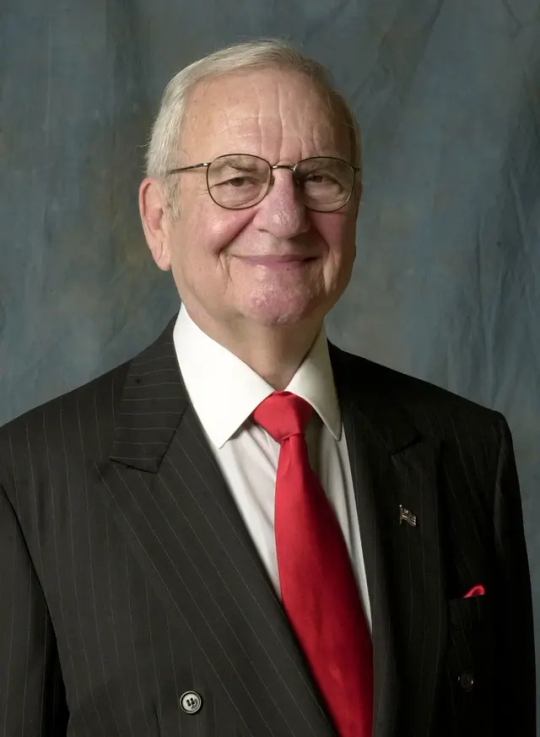
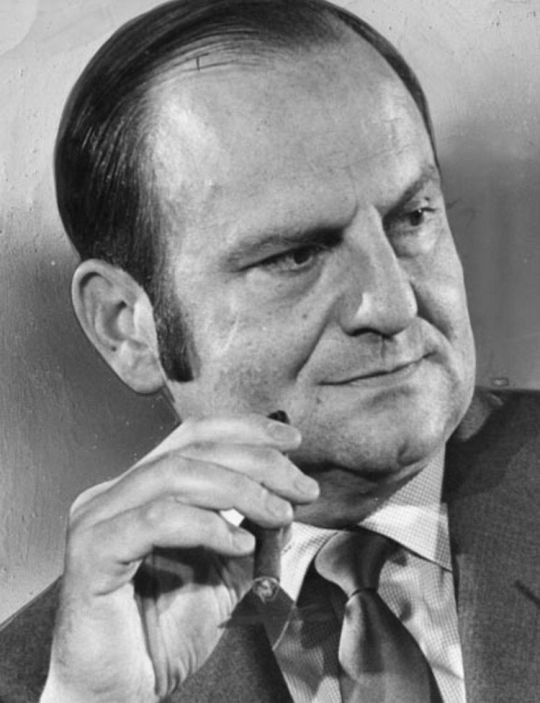
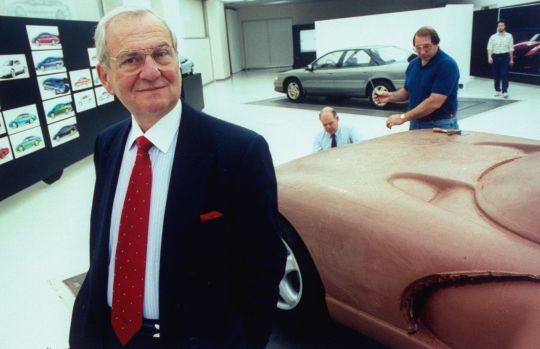

Born in Allentown, Pennsylvania, Iacocca graduated with honors from Allentown High School in Allentown in 1942. He attended Lehigh University, graduating with a degree in industrial engineering. After graduating from Lehigh, he went to Princeton University, where he earned a master's degree in mechanical engineering in 1946.

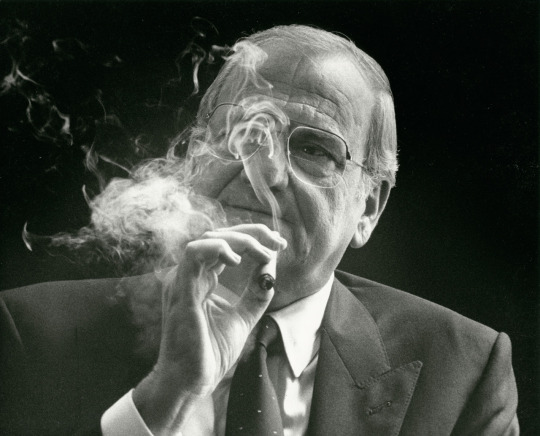

Iacocca started working at Ford Motor Company in 1946, and was a major figure in the development of the Ford Mustang. He was named president of Ford in 1970, but was fired by Henry Ford Jr. in 1978. He was then hired by Chrysler Corp. in 1978 and became the company’s CEO in 1979. He is credited with saving the company from bankruptcy.
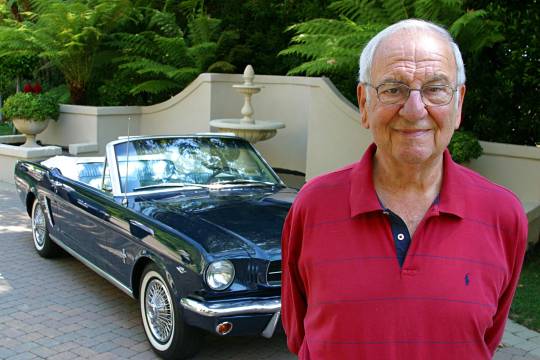


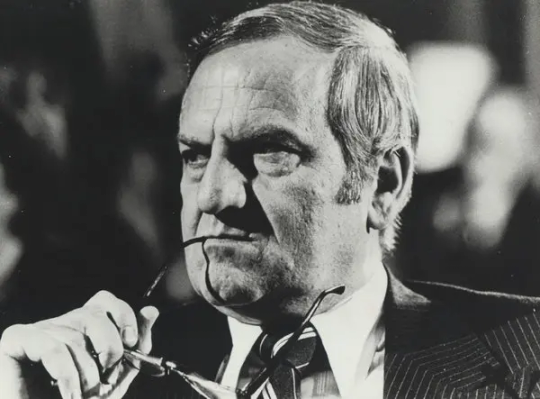

A heroic figure to many Americans, mobbed by admirers and pursued by the press. Like most men, he had a rugged handsomeness of his own and had a penchant for cigars, vinyl car roofs and Greek-temple grilles. I first notice him when he appeared on The Late Show with Jay Leno back in 1993 and I wanted to blow him ever since. He died at his home in Bel Air, at the age of 94. He is survived by two daughters and eight grandchildren.
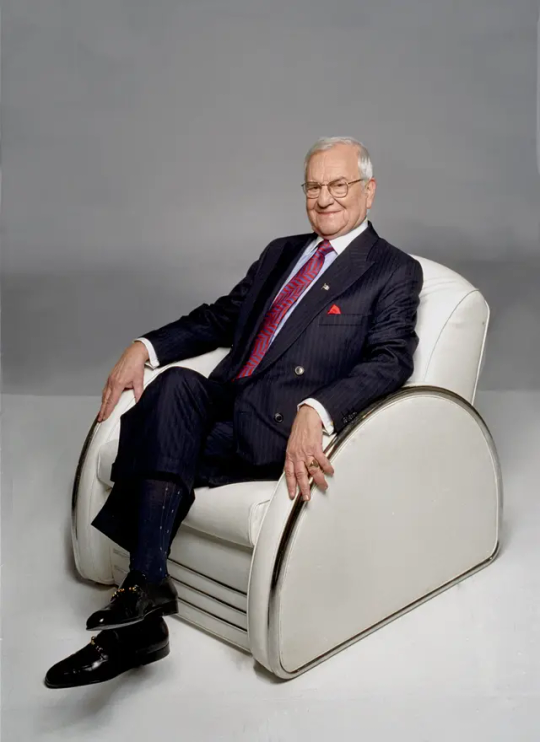
59 notes
·
View notes
Text
Just a few weeks before the 2024 presidential election in the United States, the Economist explained why the country’s economy was the “envy of the world,” with low unemployment, inflation under control, and a growth rate unmatched by any advanced economy.
Even so, widespread domestic dissatisfaction with the world’s top-performing economy helped propel Donald Trump to victory. It was also partly due to the prices of grocery staples such as eggs—something Trump promised to lower early on in his second term as president but has yet to fully accomplish.
Fast-forward a few months, and the U.S. economy is not the envy of many anymore. There are few signs of optimism among the traditional economic indicators, from capital markets to consumer confidence. Trump has, as promised, brought an economic revolution to the United States—just not in a good way.
U.S. stock markets have not only given up all the gains they piled on in the wake of Trump’s triumph, they are still sinking. Every other day brings a new “worst day since” headline for either the broad S&P 500 index, the narrower Dow Jones Industrial Average, or the tech-heavy Nasdaq. Markets are currently ruled by “extreme fear,” according to CNN’s Fear and Greed Index.
Bond markets, those traditional and ruthless vigilantes, are of two minds. Recently, though, the predominant concern is that Trump’s economic policies, especially on trade, will be such a drag on growth that the Federal Reserve will have to cut interest rates to counteract the inflation that Trump is also baking in with his import taxes and higher prices for businesses and consumers. (He launched his biggest trade war yet earlier this week and then carved out exceptions for the automotive industry after the heads of three major U.S. automakers got him on the phone; he also exempted one of his targets, Mexico, after another phone call.) Global bond markets are holding a yard sale because of Trump’s tariffs and economic arson, and also because Europe has decided to spend big on bombs and missiles.
Not to be overlooked is a wonky bond metric, an inverted yield curve on a couple of short-maturity U.S. government bonds, that has historically been a harbinger of recession.
Consumer confidence is dropping faster than it has in more than three years because consumers are worried about higher prices from Trump’s tariffs on the United States’ top trading partners. (Trump’s commerce secretary, Howard Lutnick, insists that the negative economic data from recent weeks is actually Biden administration data.)
One seemingly bright spot, a manufacturing index known as the PMI, is itself a canary in the coal mine because the uptick in manufacturing activity is a front-loaded response to get ahead of the avalanche of trade barriers and rising prices for manufacturing inputs.
Despite Trump’s entreaties, farmers are not “having fun.” China’s retaliations against the latest round of U.S. tariffs will target more than $20 billion in dwindling agricultural export markets, which were already small due to Trump’s trade wars during his first term.
The U.S. dollar keeps falling—and not just against European economies but against the entire basket of other world currencies. That is the opposite of what should happen if tariff walls are erected, which indicates a much deeper lack of confidence in the greenback.
The employment picture doesn’t look much better, though the official numbers won’t be out until March 7. One early bellwether on U.S. payrolls indicates a sharp slowdown in new hiring last month. Economists making economic growth predictions consistently lowballed what Trump would actually do on trade and are now hustling to downgrade their outlooks for 2025. One much-watched metric actually predicts a severe contraction in U.S. economic growth in the first quarter, a massive shift from expected growth just weeks earlier.
In the trenches, or the quays, the picture isn’t much prettier. The people who buy, ship, offload, forward, and otherwise manage the massive flow of goods that keep the U.S. economy humming are struggling due to Trump’s on-again, off-again, on-again, off-again but only partially, and only for a month, trade wars.
Lars Jensen of Vespucci Maritime said that “it would be pure folly to make strategic moves when there’s no idea even what the rules are tomorrow,” Bloomberg’s Supply Lines newsletter reported from the big shipping confab in Long Beach, California, this week.
Yet this—despite the Wall Street optimism last fall about big tax cuts and bigger regulatory rollbacks, and a sudden realization now—is exactly what Trump campaigned on. He promised trade wars and a sharp increase in taxes on businesses and consumers, he fought for a weaker dollar, and he vowed to defenestrate the Federal Reserve and eviscerate the rule of law—two things that underpin U.S. economic and financial health and hegemony.
One big difference from the first Trump term is that the stock market corrections—and they have been especially harsh since Trump pulled the trigger on his trade war—do not appear to have made him recalibrate, unlike the first time around, when he viewed the daily ticker as a referendum. Bond markets are having no more luck, but that might be by design.
Shortly before the election, billionaire Elon Musk, Trump’s biggest backer during the campaign and now his hatchet-cum-chainsaw man gutting the federal government, explicitly stated that the goal was to inflict short-term pain, including a few market crashes, in order to put the U.S. economy on a healthier footing. The problem is that, so far, the gains are looking to be as ephemeral or as invented as Musk’s government cost savings.
A few decades ago, a Republican candidate for president was roundly and repeatedly mocked for running on “voodoo economics,” which, of course, soon became gospel for the GOP. This is like voodoo, except the sharp pins and pain don’t only get jabbed into dolls.
19 notes
·
View notes
Text
so as I understand it in the past the US protected their car industry from foreign competition with trade policy (tariffs on imports) and later even emissions policy (huge SUVs count as "light trucks") and such policies form an implicit transfer from households who buy cars to car companies in the form of more expensive / lower quality cars.
meanwhile China protected their car industry with tariffs and by requiring foreign companies to enter into joint ventures with local companies if they want to open factories and sell into the Chinese market, then local car companies were supported by a range of other explicit and implicit subsidies, including cheap access to credit, discounted rent for factories from local government, consumption vouchers for consumers to upgrade their vehicles, favourable exchange rates to keep exports competitive, and so on and so on, all of which represent an implicit transfer to car companies from all Chinese households (even those that don't buy cars).
(now I think there are other effects that could be considered, like the big three automakers in America obviously had huge effects on unions and working conditions and labour laws and wages that are going to spill over onto other industries, and of course the development of Detroit and then later its decline as the car factories shifted to the south and overseas, plus the network of other manufacturing companies that serve the car industry, which is also threatened by the shift from internal combustion to electric cars).
but the market for cars has always been this intensely contested and engineered thing at the political and geopolitical level, a product of regulation (and so much modern law is downstream of the creation of the car!) and that's before we even get to roads.
14 notes
·
View notes
Text
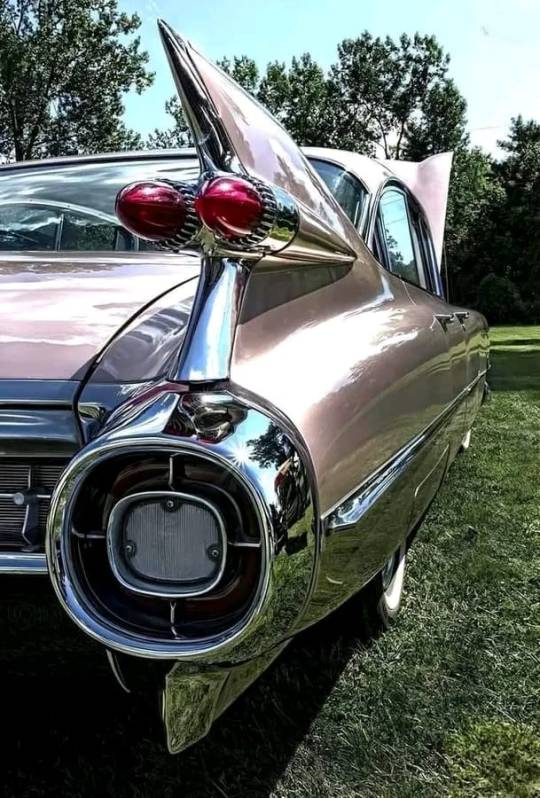
Cadillac was founded in 1902 by Henry Leland, who named the company after Antoine de la Mothe Cadillac, who happens to be the founder of Detroit. Just 6 short years later Cadillac brought the idea of interchangeable parts to the automotive industry and laid the ground work for modern mass production of automobiles. As a result, Cadillac became the first American car to win the prestigious Dewar Trophy from the Royal Automobile Club of England. After earning such high praise Cadillac adopted the slogan "Standard of the World."
In 1910, Cadillac became the first company to offer a passenger car with a fully enclosed cabin, a major change from the vehicles of the time. Two years after that, in 1912, the company released the Model Thirty, the car with no crank, which was the first production car to feature an electronic self-starter, ignition, and lighting. By dropping the crank starter, Cadillac opened the door to women drivers, and was able to bring the prestigious Dewar trophy back to Detroit, making Cadillac the only car manufacturer to claim the award twice. Nearly three years later, Cadillac brought the world the V-type, water-cooled, eight cylinder (V8) engine, which would become the signature of the Cadillac brand.
The Roaring 20's was not only a big decade for the country but was also important for Cadillac. In 1926, Cadillac branched out and offered customers more than 500 color combinations to choose from. As the famous Henry Ford saying goes, you can have any color you want, as long as it's black. Cadillac changed this mentality. That same year, the company brought in designer Harley Earl to design the 1927 LaSalle convertible coupe, which made the car the first to be designed from a designer's perspective rather than an engineering one. What Earl created was elegant, with flowing lines, chrome-plate fixtures, and an overarching design philosophy, that made the Cadillac brand known for beauty and luxury.
In the middle of the 1930's a midst The Great Depression, while most companies and families were struggling Cadillac created the first V-type 16-cylinder engine for use in a passenger car. This engine would go on to be one of the most iconic engines in Cadillac history. Shortly thereafter, Cadillac released a V12 version to give buyers something between the already popular V8 and new V16 engines.
Cadillac went quiet in the 1941's when they suspended automobile production to help produce planes for the war. After the war ended Cadillac adapted some of the aircraft technology and created the first ever tailfin on a vehicle. This feature is now found on almost every car and was one of the biggest reasons that Cadillac was given the first ever Car of the Year award in 1949.
The tailfin took off rather quickly and by the mid to late 1950's it was being featured heavily in the design of nearly every vehicle. Also in the 50's Cadillac began developing power steering, which helped the automaker take third, tenth, and eleventh places at the 24 Hours of Le Mans. After Cadillac's stunning "victories" power steering quickly became the new standard of the industry.
Small but meaningful innovations filled the 1960's for Cadillac. In 1963, the company made front seatbelts standard in their vehicles, which lead to the eventual passing of a federal law requiring front seatbelts in all vehicles just one year later. Then, in 1964, Cadillac brought to market automatically controlled headlamps and redefines luxury with Comfort Control, the industry's first thermostatically controlled heating, venting, and air-conditioning system. Over the next few years, Cadillac introduced variable-ratio power steering, electric seat warmers, and stereo radio.
While the 1960's were fairly quiet, with only some smaller, luxury items being introduced, Cadillac started out 1970 with a major bang. Cadillac opened the decade by unveiling the 400 horsepower, 8.2-liter engine Eldorado. With its completely redesigned axle this model boasted the highest torque capacity of any passenger car available at the time. Closing out the decade, Cadillac brought to market the 1978 Seville which used onboard microprocessors in its digital display. This started the era of the computerized automobile.
Throughout the 1980's Cadillac laid low, working on some new technologies that would come to market in the early parts of the 1990's. The first feature to debut was an electronic traction control system on front-wheel drive vehicles. Cadillac began offering this as a standard feature on the 1990 Cadillac Allante. This same year Cadillac would go on to win the Malcolm Baldrige National Quality Award. Two years later, in 1992, the company developed a feature that allowed the engine to run for up to 50 miles without coolant, and a unique induction system for near-perfect fuel distribution. The Seville Touring Sedan of that year would become known as the "Cadillac of the Year" thanks to features such as an all electronically controlled Powertrain, traction control, anti-lock brakes and speed-sensitive suspension. Closing out the decade, Cadillac introduced the, now iconic, Escalade SUV.
CELEBRATING 100 YEARS AS 'THE STANDARD OF THE WORLD'
Coming up on the 100th anniversary of the Cadillac brand, the company had to do something big or the decade, and they did not disappoint. Cadillac started off the 200's by introducing the F-22 stealth aircraft inspired Cien Concept, which ended up winning a few design awards. Later in the decade, in 2008, Cadillac expanded the Escalade SUV by making it the world's first full-size luxury hybrid SUV. In the same year, the company redeveloped the CTS Sedan. This redesign has been incredibly popular and even won the coveted 2008 Car of the Year award. A short year later, the performance edition CTS-V, becomes the fasted V8 production sedan in the world, establishing a record lap time of 7:59:32 on Germany's famed Nürburgring.
#cadillac#cadillac eldorado#cadillac fleetwood#cadillac deville#cadillac coupe de ville#Cadillac escalade#car#cars#Cadillac Escalade SUV
69 notes
·
View notes
Text


Notable quotes from this article include:
"The strike – which marks the first time all three of the Detroit Three carmakers have been targeted by strikes at the same time – is being coordinated by UAW president Shawn Fain. He said he intended to launch a series of limited and targeted “standup” strikes to shut individual auto plants around the US." "They involve a combined 12,700 workers at the plants, which are critical to the production of some of the Detroit Three’s most profitable vehicles including the Ford Bronco, Jeep Wrangler and Chevrolet Colorado pickup truck."
"The UAW has a $825m strike fund that is set to compensate workers $500 a week while out on strike and could support all of its members for about three months. Staggering the strikes rather than having all 150,000 members walk out at once will allow the union to stretch those resources.
A limited strike could also reduce the potential economic damage economists and politicians fear would result from a widespread, lengthy shutdown of Detroit Three operations."
AND, THE BIG ONE: "Among the union’s demands are a 40% pay increase, an end to tiers, where some workers are paid at lower wage scales than others, and the restoration of concessions from previous contracts such as medical benefits for retirees, more paid time off and rights for workers affected by plant closures.
Workers have cited past concessions and the big three’s immense profits in arguing in favor of their demands. The automakers’ profits jumped 92% from 2013 to 2022, totaling $250bn. During this same time period, chief executive pay increased 40%, and nearly $66bn was paid out in stock dividends or stock buybacks to shareholders.
The industry is also set to receive record taxpayer incentives for transitioning to electric vehicles.
Despite these financial performances, hourly wages for workers have fallen 19.3%, with inflation taken into account, since 2008."
223 notes
·
View notes
Text
UAW strikes created the middle class, this one can bring it back

Big strikes like this one are about more than the striking workers. When the UAW struck GM in 1945/46, they transformed the American labor bargain. That strike gave birth to the defined-benefits pension, employer-provided healthcare, the cost-of-living allowance, and worker pay raises linked to employer profits. The UAW strike of ’45 created the American middle class.
Today, that middle class is an endangered species. American oligarchs have spent decades siphoning away the wealth of workers and gathering it into fewer and fewer hands. Today, “autocrats of trade” have replaced the aristocrats that American revolutionaries overthrew at the nation’s birth.
These new aristocrats are powerful and ruthless, but they’re also vulnerable. They lack the executive function and the solidarity to stop draining the American economy as it grows increasingly brittle. The plute’s “efficiency” comes from long, fragile supply chains, skeleton crews working punishing overtime, and regular federal bailouts for companies that are designed to be both too big to fail and too big to jail.
The UAW only has enough money in its strike fund to support all its workers for 90 days. Car bosses — like other C-suite sociopaths — are prepared to halt production for years in order to smash worker power.
But the UAW doesn’t need to send all of its workers to the picket line to shut down production. Their bosses have made themselves terribly vulnerable, by eliminating backup suppliers and by relying on workers accepting “voluntary” overtime to meet production quotas. Simply by shutting down just a few facilities and refusing overtime at a few more, UAW members can immobilize US car production while barely touching the strike fund.
-Joe Biden is headed to a UAW picket-line in Detroit: “I want to do it, now make me do it.”
Image: Fabio Basagni https://commons.wikimedia.org/wiki/:Sahara_desert_sunrise.jpg
CC BY-SA 4.0 https://creativecommons.org/licenses/by-sa/4.0/deed.en
#joe biden#dark brandon#uaw#strikes#fdr#labor#hot labor summer#big three automakers#manchin-synematic universe#unions#i want to do it now make me do it#pack the court#workerism#money talks bullshit walks#jennifer abruzzo#personnel are politics#nlrb#populism#deliverism#doppelganger#republicans hate workers#class war#no war but class war
122 notes
·
View notes
Photo

(via Chaos Compounded - by Dan Rather and Team Steady - Steady)
If Trump had done nothing about the economy, we’d be in better shape than we are now. Before he came to power, unemployment was low, inflation was finally coming down, and the stock market was hitting record highs. But he hasn’t done nothing. Trump has started a trade war. The stock market is reeling. Canada and Mexico, our two biggest trading partners, are seething. Trump’s tariffs are a petulant and ill-advised bargaining tactic that will impact every American and could push us into recession.
Gasoline, strawberries, smartphones, nails — all will cost more. And If you are thinking of buying a new car, the post-tariff price of many models just skyrocketed. The average new car costs just under $50,000. Trump’s tariffs will add $12,500 to the sticker. It’s no wonder the big three automakers begged the White House for a break. King Trump just granted their wish with a 30-day reprieve.
Do you know where that extra $12,500 goes? Straight to the U.S. Treasury, where it will be used to help offset the price of Trump’s tax cuts to the ultra rich. So all this talk of getting tough with Canada, Mexico, and China is really a cover for getting more money into the U.S. coffers, courtesy of you, the taxpayer.
14 notes
·
View notes
Text

🇺🇲 February 14, 1924 – A pivotal day in automotive history! Walter Chrysler was officially elected president of the Maxwell Automobile Company, setting the stage for one of the most influential car brands in America.
🔧 By 1921, Maxwell was struggling, and Chrysler, a former Buick executive, saw an opportunity. He took controlling interest in the company and worked to revitalize it.
🚘 In 1925, Maxwell was phased out, and all assets were merged into a brand-new company—the Chrysler Corporation. The first Chrysler-branded car had already debuted in 1924, featuring advanced engineering for the time, like a high-compression engine and four-wheel hydraulic brakes. This bold move laid the foundation for decades of automotive innovation.
🏁 From this moment on, Chrysler would go on to challenge the biggest names in the industry, eventually growing into one of the Big Three automakers in Detroit.
Transatlantic Torque: Brits & Yanks on Wheels!
#transatlantic torque#brits and yanks on wheels#cars#old cars#retro cars#vehicle#brands#companies#automobile#american cars#chrysler voyager#chrysler cirrus#walter chrysler#daimler chrysler#chrysler#detroit#michigan#maxwell motors#sedan#american auto#big three#buick#buick regal#buick riviera#buick lesabre#merry chrysler#car brands#old car#classic cars#classic car
13 notes
·
View notes
Text


742 notes
·
View notes
Text
When I was growing up, people used to get all froggy about how many cylinders their car’s engine had. Mine’s a V6. Well, mine’s a V8. Nowadays, that doesn’t matter so much: if you have a V8, that’s cool and all, but technology has moved on. Now, automakers will sell you cars that come with little three-cylinder lawnmower engines. With enormous turbochargers attached.
All these big automakers are finally returning to the glories of turbocharging, after having abandoned it in the 1980s for being “too dangerous” and “kind of crap.” Modern technology has made turbocharged engines more reliable, smoother-driving, and easier to live with in general. Those of us who never abandoned the forced induction lifestyle are wondering: what took you folks so long?
I remember the first time I strapped a turbocharger to an engine. We’d lured in a handful of art-college students and made them create an intricate turbo manifold for a 1993 Plymouth Breeze. The Breeze, as you may remember, was not any good at acceleration. Adding a turbocharger made it really good at acceleration. Eventually, one of the art students defected, becoming a mechanical weirdo like ourselves, having transitioned to the cult of boost from whatever pitiful religion he used to follow. I don’t remember his name. Let’s call him Choo-Choo.
Here’s the problem with a turbocharger: once you get bored of how much power it makes, you can tell it to make a little more power, but then you will get bored again. Then, you realize that since you’ve put in infrastructure to support a turbo, you can pull it and put in a bigger turbo, very easily. Say, one from a semi truck. And then one from a bigger semi truck. And then one from a Komatsu heavy loader that requires you to cut a hole in the hood just so that the compressor housing can fit.
Choo-Choo learned the limits of human enterprise on that day, when the Breeze ejected its pitiful automatic transmission into the heavens while on its way to what we all believed would be a 10.16 pass at 139 miles an hour. He survived, albeit forever changed. The last thing he told me was that he was going to go work for Ford, to spread the gospel of the snail to them, too. We laughed, and laughed, and laughed, and yet here it is. Ford’s greatest performance monster: the base-model 1.0-litre EcoSport.
212 notes
·
View notes